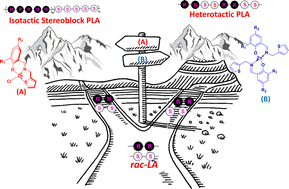Mononuclear Zn(ii) compounds supported by iminophenolate proligands binding in the bidentate (N, O) and tridentate (N, O, S) coordination mode: synthesis, characterization and polymerization studies†
Abstract
We synthesized eight Zn(II) compounds containing unsymmetrical phenoxy–imine ligands with a thiophen-2-ylmethanimine side arm. The Reactions of the ligands with different Zinc(II) precursors such as ZnEt2 in a 2 : 1 stoichiometric ratio and with EtZnCl in a 1 : 1 ratio resulted in the formation of the corresponding disubstituted and monosubstituted products in quantitative yields. These compounds were completely characterized using conventional spectroscopic techniques, mass spectrometry and single-crystal X-ray diffraction studies on a few of them. Single-crystal X-ray diffraction studies revealed that the Zn(II) center in the disubstituted compounds adopts a tetrahedrally distorted square-planar geometry. From Raman spectroscopy we concluded that the Zn(II) center in the monosubstituted compounds adopts a tetrahedral geometry. For the distorted square-planar zinc compounds, the iminophenolate ligands coordinate to zinc in a bidentate fashion through nitrogen (N) and oxygen (O), and for the tetrahedral compounds, the iminophenolate ligands bind to zinc in a tridentate coordination mode through nitrogen (N), oxygen (O) and sulfur (S). These compounds exhibited catalytic activity for the ring-opening polymerization (ROP) of rac-lactide (rac-LA) and ε-caprolactone (ε-CL). A significant degree of stereocontrol was observed for the ROP of rac-LA with the distorted square-planar compounds, resulting in heterotactic-enriched PLA (Pr = 0.67). However, the tetrahedral compounds produced isotactic-enriched PLA (Pm = 0.78). The zinc compounds were also active for the ring-opening copolymerization (ROCOP) of CO2 with cyclohexene oxide (CHO) and propylene oxide (PO) in the presence of tetraphenylphosphonium chloride (TPPCl) as a cocatalyst. They showed good activity producing completely alternating polycarbonates with turnover frequency values up to 62 h−1 and high selectivity (carbonate linkages >70%).



 Please wait while we load your content...
Please wait while we load your content...